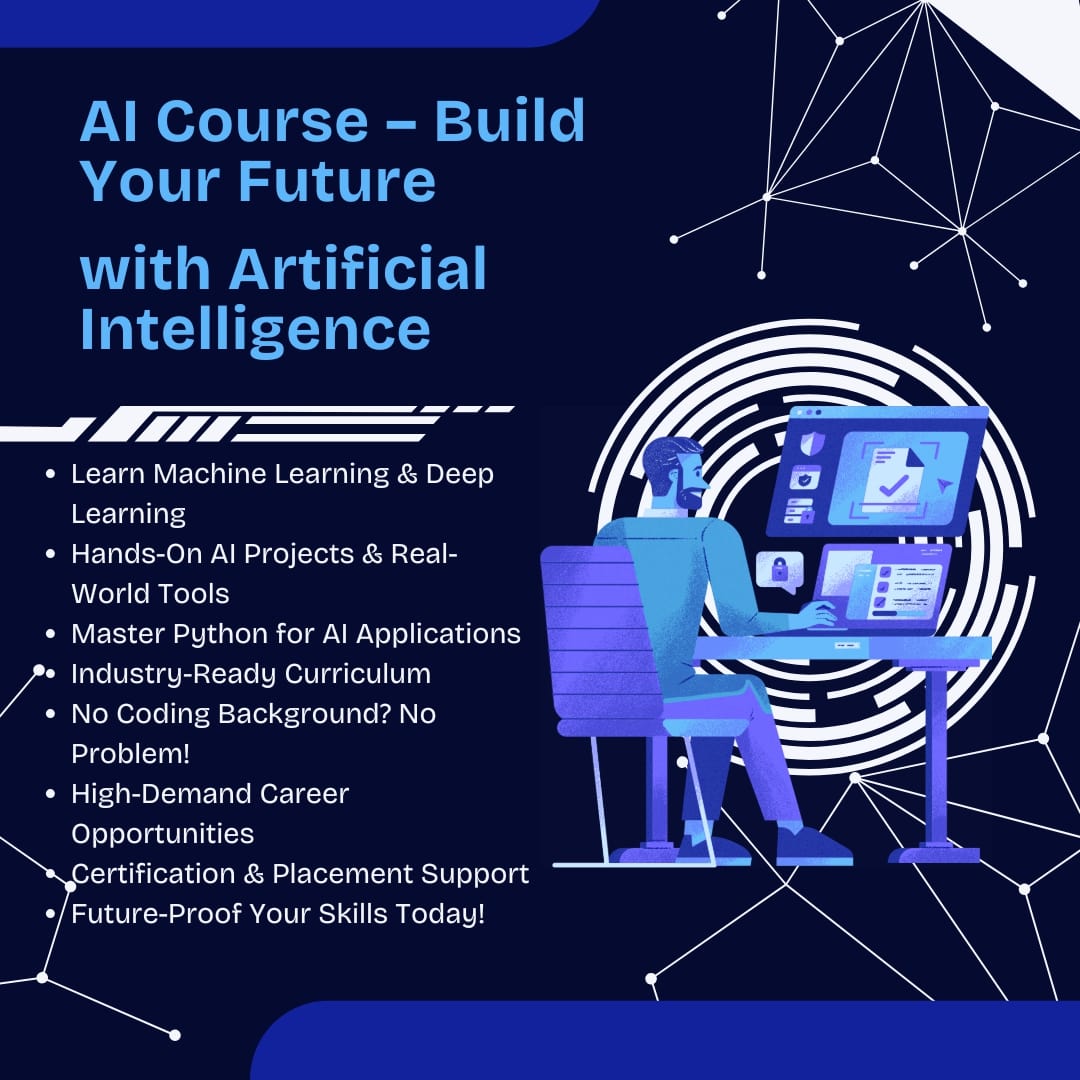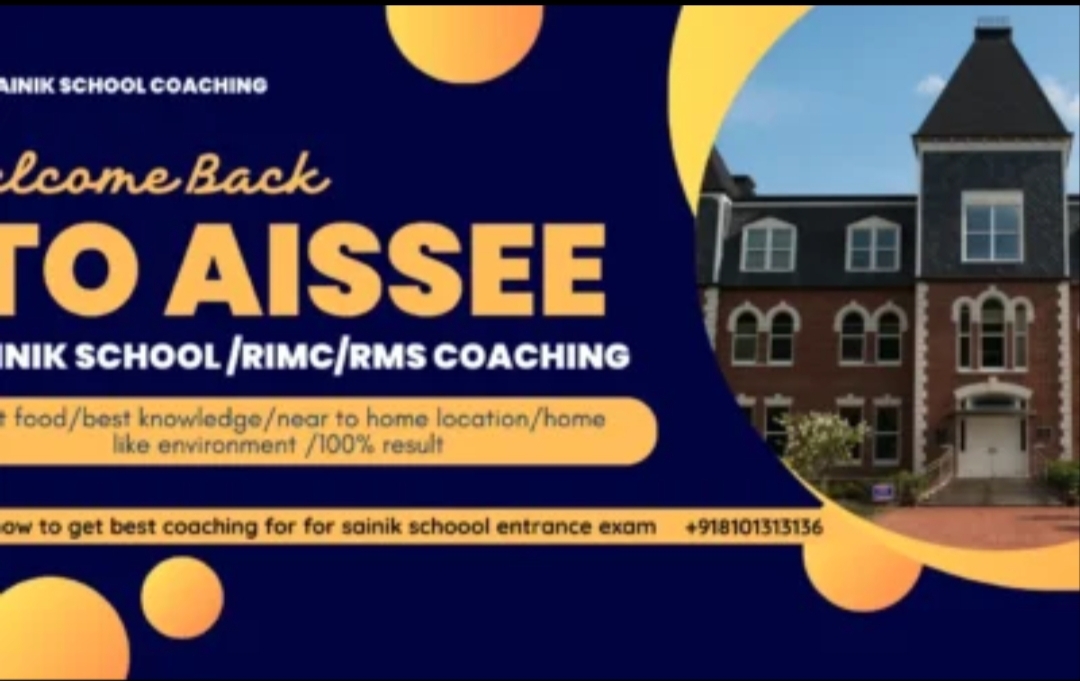Introduction
Artificial Intelligence course in Chandīgarh (AI) might seem like a field reserved for programmers and data scientists, but the truth is—anyone can start learning AI, even without a coding background. With the rise of no-code tools, beginner-friendly platforms, and visual learning methods, AI is more accessible than ever. Whether you’re a student, business professional, or curious learner, you can now explore the fundamentals of AI and even build your own models without writing a single line of code. In this blog, you’ll discover how to begin your AI journey—code-free.
Understanding AI Without Programming
What Is AI?
Artificial Intelligence (AI) is the branch of computer science that focuses on creating machines or software that can perform tasks that typically require human intelligence. These tasks include learning from data, recognizing speech, understanding images, making decisions, and solving problems.
Instead of being explicitly programmed for every action, AI systems learn from experience—much like humans do. They can improve over time by analyzing patterns and making predictions or decisions based on the data they receive.
Common Examples of AI in Daily Life:
- Voice assistants like Siri or Alexa
- Product recommendations on Amazon or Netflix
- Self-driving cars
- Chatbots on websites
- Email spam filters
Types of AI:
- Narrow AI: Designed for specific tasks (e.g., facial recognition)
- General AI: Can perform any intellectual task a human can do (still theoretical)
- Super AI: More advanced than human intelligence (a future concept)
In short, AI is about teaching
Is Coding Always Required?
Not anymore. While programming helps in advanced applications, there are no-code tools and visual platforms that let beginners learn and experiment with AI concepts through easy-to-use interfaces.
Beginner-Friendly Ways to Learn AI Without Coding
Use No-Code AI Platforms
Many modern tools allow users to create AI models visually. Some popular options include:
- Teachable Machine (by Google): Build image, sound, and pose recognition models
Lobe.ai (by Microsoft): Create image classification models without code - RunwayML: Easy video and media-based AI tools
- Peltarion: Drag-and-drop interface for deep learning
Explore Visual Learning Tools
Websites like:
- Khan Academy
- YouTube AI tutorials
- edX & Coursera (with beginner tracks)
offer visual explanations and guided walkthroughs of AI concepts—no programming experience needed.
Learn the Core Concepts First
Even without coding, you can understand the fundamentals behind how AI works, such as:
- What is Machine Learning?
- Types of AI (Supervised, Unsupervised, Reinforcement Learning)
- How data is used in training models
- What makes AI predictions accurate or biased
- Real-life applications of AI
Understanding the logic behind these systems prepares you for more advanced learning in the future.
Build AI Projects Without Code
Real-World Examples You Can Try
You can build simple AI projects using drag-and-drop tools like:
- Classifying plant types from pictures
- Creating a virtual assistant
- Detecting emotion from facial expressions
- Translating text between languages
These projects help solidify your understanding of how AI makes decisions using data.
Upgrade Over Time (Optional Coding Path)
Once you’re comfortable, you can choose to:
- Learn basic Python to expand your skills
- Use platforms like Google Colab for hands-on AI experiments
- Enroll in foundational AI and ML courses if you’re ready to dive deeper
This step is optional but gives you more flexibility if you want to explore technical roles in the future.
AI Career Options That Don’t Require Coding
Not every role in the AI space demands programming. You can explore careers such as:
- AI Project Manager
- AI Product Analyst
- Ethical AI Consultant
- Data Annotator
- AI Business Strategist
These positions require understanding how AI works and how to apply it—not building models from scratch.
Final Thoughts
You don’t need to be a programmer to begin exploring AI. With the rise of no-code platforms and beginner-friendly tools, anyone with curiosity and commitment can start learning. Understanding how AI works—and how it affects industries and decisions—can add real value to your personal and professional AI growth. Whether you plan to pursue a career or simply want to stay future-ready, there’s never been a better time to get involved in AI, no coding required.
(FAQs)
- Can I really learn AI without knowing how to code?
Yes! Many no-code tools allow you to build AI models visually without writing any code. - What are the best tools to start with as a non-coder?
Teachable Machine, Lobe.ai, and RunwayML are excellent beginner-friendly platforms to experiment with AI. - Will learning AI without coding limit my career options?
Not necessarily. While some roles require coding, many involve managing, analyzing, or applying AI—skills that don’t demand programming. - Is AI too technical for someone from a non-tech background?
AI can be complex, but basic concepts like classification, training, and decision-making are easy to grasp with visual aids and simple examples. - How long will it take to learn the basics of AI?
You can understand AI fundamentals in as little as 4–6 weeks with consistent effort using no-code resources. - What subjects should I focus on to better understand AI?
Basic logic, data handling, ethics, and real-world applications. You can add math and programming later if needed. - Can I build real projects without coding in AI?
Yes! Many tools allow you to build image recognition, language translation, and chatbot projects without any programming. - Is there a career future for non-coders in AI?
Absolutely. Roles in strategy, ethics, business analysis, and user experience in AI-driven products are growing rapidly.






